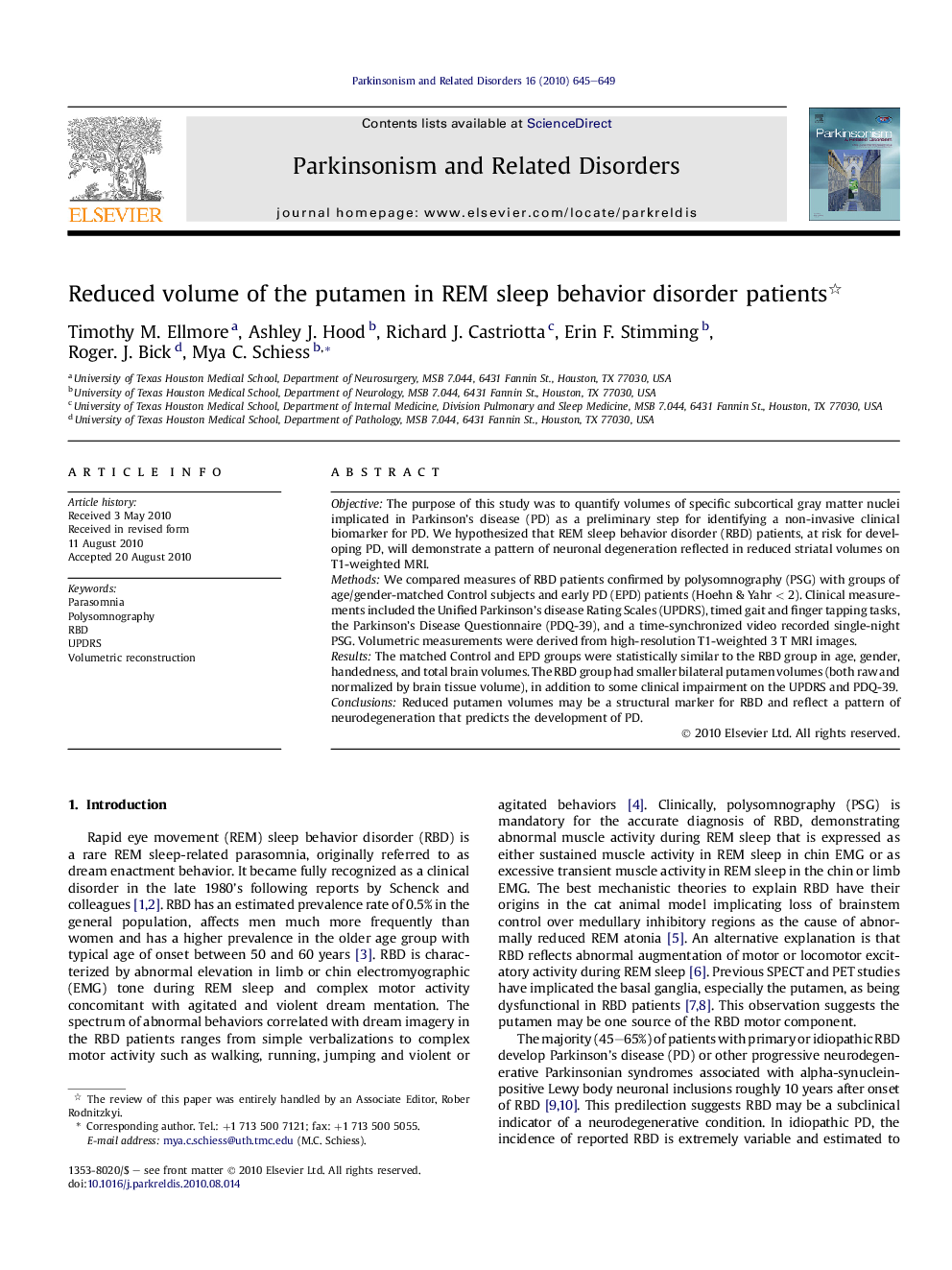| Article ID | Journal | Published Year | Pages | File Type |
|---|---|---|---|---|
| 1921050 | Parkinsonism & Related Disorders | 2010 | 5 Pages |
ObjectiveThe purpose of this study was to quantify volumes of specific subcortical gray matter nuclei implicated in Parkinson’s disease (PD) as a preliminary step for identifying a non-invasive clinical biomarker for PD. We hypothesized that REM sleep behavior disorder (RBD) patients, at risk for developing PD, will demonstrate a pattern of neuronal degeneration reflected in reduced striatal volumes on T1-weighted MRI.MethodsWe compared measures of RBD patients confirmed by polysomnography (PSG) with groups of age/gender-matched Control subjects and early PD (EPD) patients (Hoehn & Yahr < 2). Clinical measurements included the Unified Parkinson’s disease Rating Scales (UPDRS), timed gait and finger tapping tasks, the Parkinson’s Disease Questionnaire (PDQ-39), and a time-synchronized video recorded single-night PSG. Volumetric measurements were derived from high-resolution T1-weighted 3 T MRI images.ResultsThe matched Control and EPD groups were statistically similar to the RBD group in age, gender, handedness, and total brain volumes. The RBD group had smaller bilateral putamen volumes (both raw and normalized by brain tissue volume), in addition to some clinical impairment on the UPDRS and PDQ-39.ConclusionsReduced putamen volumes may be a structural marker for RBD and reflect a pattern of neurodegeneration that predicts the development of PD.
